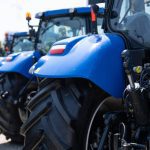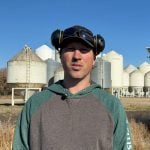Dr. Ed Pajor serves as part of the animal care team at Calgary Stampede.
It seems every few months there are more case studies that emerge on why agriculture needs to become more proactive in managing animal welfare issues.
The recent W5 investigative report, “Behind the barn door,” is one high-profile example that hits home for Canadian livestock industries. The often highly emotional and polarizing debate around gestation stalls is another.
Scanning the environment, another issue that is clearly rising in profile is pain management.
Read Also

Mosquito-borne virus could be devastating to sheep breeding operations
Cache Valley virus, a mosquito-borne disease that infects small ruminants, could be a devastating hit to small operations.
Among the many signs of this trend, one example in the U.S. is a recent large-scale, activist-driven social media campaign, that has emerged against California Pizza Kitchen, targeting dehorning practices.
Another sign, this time in Europe, is a new website launched on alternatives to pig castration. It showcases how EU countries are talking seriously about voluntarily moving away from pig castration altogether and are already conducting complex, well-funded studies into the options and implications.
It is on this rising issue of pain management that Canadian livestock producers and their industries have an important opportunity, says leading animal welfare expert Dr. Ed Pajor of the University of Calgary faculty of veterinary medicine.
That opportunity is to learn from the experiences with welfare-related issues that have damaged animal agriculture’s image in the past. Then, use this knowledge to develop better, more proactive approaches on pain and other challenges that are likely to become increasingly important in the months and years ahead.
“Pain, for example, is no longer just an emerging challenge,” says Pajor, a researcher and professor of animal behaviour and welfare who works with and advises industry in numerous capacities both domestically and internationally.
“It is a challenge that is here today that we’re going to have to address in the very near future. There’s a great deal of pressure coming from other places in the world. It’s an issue that people can really understand, even if they are well removed from agriculture, and we need to be prepared.”














